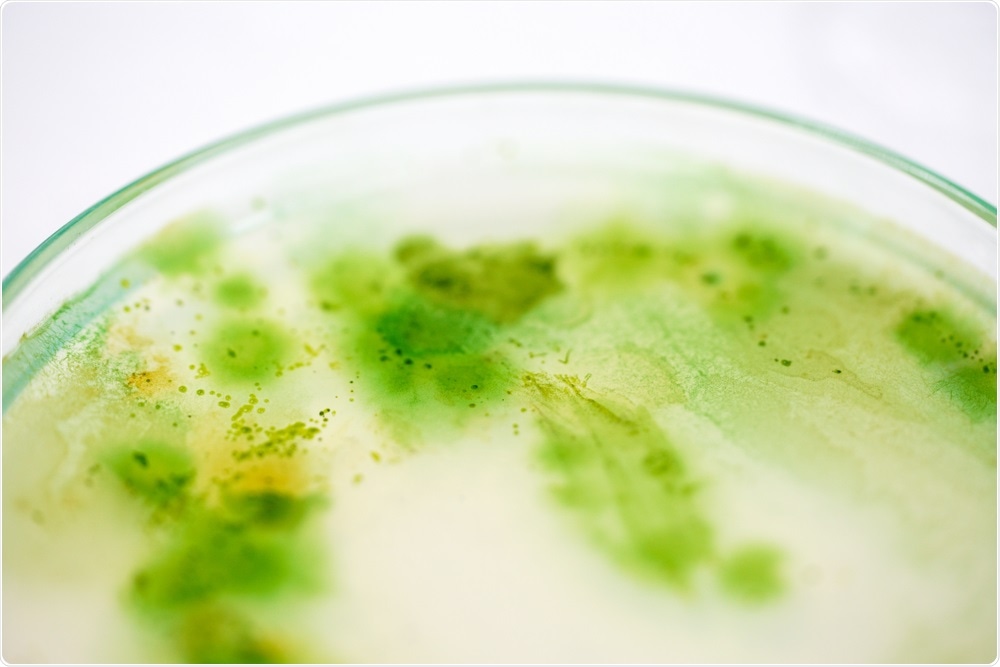
The authors say their findings provide insights into potential ways of treating exposures and how to help patients who are vulnerable if an exposure does occur.
The take-home message from our research is there are certain groups of people who need to pay extra attention and may be more susceptible to microcystin toxins. We may need to explore special preventative guidelines for those people in terms of how much microcystin they are exposed to through drinking water or other means."
David Kennedy, Co-lead Author
The study builds on previous research conducted at the university, which found that exposure to microcystin worsens the severity of pre-existing colitis, an inflammatory condition that affects the colon and rectum.
Microcystin is a potent hepatotoxin (liver toxin)
Microcystin is a potent hepatotoxin that has become a significant health concern over recent years, as seasonal blooms increase across the US.Warming waters and nutrient run-offs have meant seasonal blooms of the algae are becoming more intense and are flourishing across much of the US.
Potentially dangerous levels of microcystin have been detected this year in reservoirs in California, ponds in New York, a portion of Lake Erie’s coastline and along the Mississippi Gulf Coast.
Although no deaths have yet been linked to the toxin in the US, deaths have occurred elsewhere such as in Brazil, where deaths were reported among a group of kidney dialysis patients.
A number of dogs have also been reported dead this year after exposure to the algae in Georgia, Texas and North Carolina.
Potential dangers of exposure
With the algae blooms intensifying across much of the nation, Kennedy and colleagues want to better understand how microcystins might affect people with conditions that affect the organs that the toxins are known to damage, such as the liver.“Their actions in at-risk populations with pre-existing liver disease is unknown,” writes the team.
Co-author Steven Haller says there is a gray area in terms of what microcystin is really doing to a person if they already have a disease:
Are you more susceptible? Are we going to have to go back and revaluate what we consider safe in a person with a pre-existing disease state? It's important we start providing answers to these questions.”
As recently reported in the journal Toxins, Kennedy and colleagues investigated the effects of chronic, low-level exposure to microcystin among mice with NAFLD, compared with exposure among mice without the disease.
At microcystin ingestion levels that were lower than the “No Observed Adverse Effect Level” (NOAEL) for healthy mice, liver damage was significantly exacerbated among the mice with fatty liver disease.
"Current exposure limits from the World Health Organization and the U.S. Environmental Protection Agency for humans are based off studies done in healthy animals," says Haller. "The results of this study suggest there may be a need to review those guidelines for people with pre-existing conditions."
The kidneys may play an important role
The team also found major differences between the two groups of mice in how microcystin was processed by the kidneys.Among the mice with NAFLD, blood plasma levels of microcystin were elevated, whereas the toxin was not detectable in the plasma of the healthy mice. The mice with liver disease also excreted far less microcystin in their urine than the healthy mice did.
These between-group differences in how microcystin was processed suggest that kidney function may be an important factor contributing to the increased susceptibility among the mice with liver disease.
"This may be highly relevant to help us understand the deaths that occurred in kidney dialysis patients, and point to the need to pay particular attention to at-risk patient populations as we design preventative, diagnostic and therapeutic strategies," says Kennedy.
The findings build on previous research by the team
The findings from this study build on previous work by Kennedy and Haller that looked at how exposure to microcystin might affect people with inflammatory bowel disease, another common condition that is estimated to affect around 1 million people in the US.That study, which was published in June, showed that exposure to the most toxic form of microcystin - microcystin-LR (MC-LR) prolongs and worsens the severity of pre-existing colitis and contributes to weight loss, increases the number signaling molecules involved in inflammation and exacerbates bleeding.
In the current study, it was also this most toxic MC-LR that was found to significantly increase hepatic injury:
These results demonstrate that exposure to MC-LR at levels that are below the NOAEL established in healthy animals results in significant exacerbation of hepatic injury that is accompanied by genetic and phosphoproteomic dysregulation in key signaling pathways in the livers of NAFLD mice."
Kennedy says the data the studies are generating are providing insights into how it may be possible to treat exposures if they do occur.
"This is giving us a number of insights into how we might help patients, especially patients who are vulnerable or susceptible if there was an exposure,” he concludes.
Journal reference:
Lad, A., et al. (2019). Chronic Low Dose Oral Exposure to Microcystin-LR Exacerbates Hepatic Injury in a Murine Model of Non-Alcoholic Fatty Liver Disease. Toxins. https://www.mdpi.com/2072-6651/11/9/486






No comments
Post a Comment